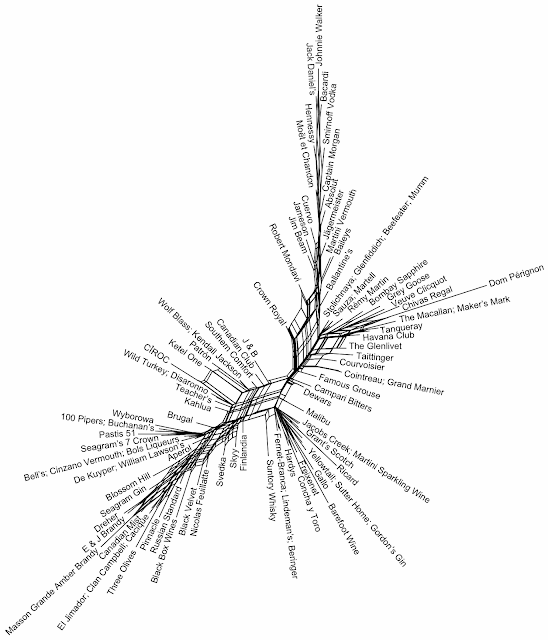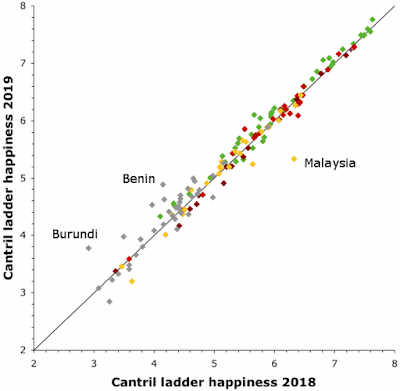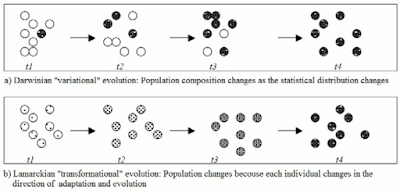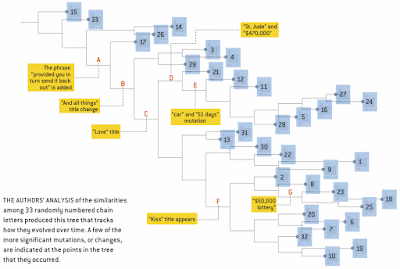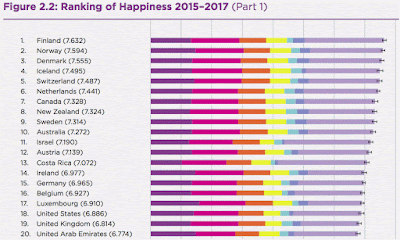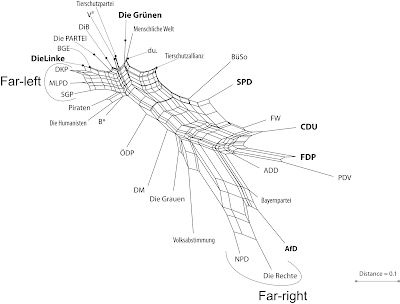Commercial alcoholic beverages have all sorts of market characteristics, one of which is their ability to dominate their markets. This feature was investigated in a survey of the world’s leading drinks brands, published annually from 2006-2015 by the international company strategists Intangible Business. This was called The Power 100, in which each brand was given a power score, allowing them to be ranked.
Intangible Business apparently researched c. 10,000 spirit and wine brands across the globe, to assess both the financial contribution of each brand and its strength in the eyes of the consumer. To do this, they combined scores from a panel of drinks industry experts with global sales data (see Methodology, and Panelists). [Note: the resulting reports used to be housed at www.drinkspowerbrands.com, but this site disappeared in 2017, with 2015 as the final report.]
The Brand Score (out of 100) was produced by the panelists, who scored each brand for these eight characteristics (scale: 0–10):
- Share of market: a volume-based measure of market share
- Future Growth: projected growth based on 10 years of historical data plus future trends
- Premium Price Positioning: a measure of the brand’s ability to command a premium
- Market Scope: number of markets in which the brand has a significant presence
- Brand Awareness: a combination of prompted and spontaneous awareness
- Brand Relevancy: capacity to relate to the brand and a propensity to purchase
- Brand Heritage: the brand’s longevity and a measure of how it is embedded in local culture
- Brand Perception: loyalty, and how close a strong brand image is to a desire for ownership.
Across the 10 years, 141 brands appeared at least once, although only 68 (48%) of them appeared in all 10 surveys, with another 8 appearing in 9/10 years. That is, only half of the brands had any sustained Power. In the other cases, the brands either appeared in the early surveys only, or in the later surveys only — very few came and went from year to year (implying that they were just on the border of the top 100).
As usual in this blog, we can get a picture of the variation among brands by using a phylogenetic network, as a form of exploratory data analysis. For the first analysis, I calculated the similarity across the 8 Brand Score criteria using the Manhattan distance, based on those 100 brands that appeared in the final (2015) report. A Neighbor-net analysis was then used to display the between-year similarities, as shown in the graph above. Brands that are closely connected in the network are similar to each other based on their Brand Score, and those that are further apart are progressively more different from each other.
There is a general trend of high scores at the top of the network downwards to the bottom left. However, the network does not show a simple trend, such as is implied by the 1-dimensional ranking produced in the original Intangible Business report. That is, there is a complexity among the scores — it is possible for two brands to get the same Brand Score but to get it by scoring highly on quite different criteria. This illustrates the importance of using multi-dimensional summaries for exploratory data analysis — the patterns to be found may not be simple.
In this particular case, note that some brands, like Crown Royal and Dom Perignon, diverge greatly from the overall trend, indicating that they have unusual combinations of scores. Also, the two neighborhoods at the left and right of the network have different combinations from each other, although they end up with similar overall Brand Scores.
For the second analysis, I compared the different years. I calculated the Brand Score similarity across the 10 years using the Manhattan distance, based only on those 104 brands that appeared in at least 5 of the years. A Neighbor-net analysis was then used to display the between-year similarities, as shown in the second graph.
As you can see, in this case the network is as linear as you could expect, indicating that there is little more than 1 dimension of information to summarize. In this case, it basically shows a single rank-ordering of the Brand Scores averaged across the years (with the highest average score at the top of the network and the lowest at the bottom). So, in this case it is much simpler just to list the average Brand Scores in a table, rather than use the network (keep it simple!) — the network is being used to check whether there are more complex patterns, but not to display the pattern found.
This table is shown next, because it has never been listed before (none of the original reports compare all of the years). You can find your favorite brand, and check how "powerful" it has been in the maketplace, across time. Spirits do better than wines, but there is no consistency about which types of spirits do best.
| Brand Johnnie Walker Bacardi Hennessy Jack Daniel's Moët et Chandon Smirnoff Vodka Absolut Dom Pérignon Baileys Veuve Clicquot Chivas Regal Captain Morgan Cuervo Martini Vermouth Jameson The Macallan Ballantine's Havana Club Rémy Martin Jägermeister Maker's Mark Glenfiddich Martell Jim Beam Grey Goose Bombay Sapphire The Glenlivet Concha y Toro Robert Mondavi Stolichnaya Beefeater Gordon's Gin Courvoisier Malibu Tanqueray Sauza Crown Royal Taittinger Mumm J & B Patrón Penfolds Hardys Cointreau Freixenet Gallo Wolf Blass Southern Comfort Jacobs Creek Campari Bitters Famous Grouse Torres Grand Marnier Canadian Club Finlandia Piper Heidsieck Laurent Perrier Beringer Dewars Kahlua Martini Sparkling Wine Yellowtail Lindeman's Svedka Skyy Wild Turkey Grant's Scotch Teacher's Ketel One De Kuyper Kendall Jackson Nicolas Feuillatte Cutty Sark Aperol Disaronno Ricard Cinzano Vermouth Russian Standard Fernet-Branca Bell's Blossom Hill Sutter Home William Lawson's Wyborowa El Jimador Bols Liqueurs Eristoff Clan Campbell Seagram's 7 Crown 100 Pipers Seagram Gin Ramazzotti Amaro Inglenook Black Velvet Three Olives Seagram V.O. Cacique Metaxa E & J Brandy Canadian Mist Dreher Masson Grande Amber Brandy Pastis 51 Moskowskaya | Category Blended Scotch Rum / Cane Cognac US Whiskey Champagne Vodka Vodka Champagne Liqueurs Champagne Blended Scotch Rum / Cane Tequila Light Aperitif Blended Irish Whiskey Malt Scotch Blended Scotch Rum / Cane Cognac Bitters / Spirit Aperitifs US Whiskey Malt Scotch Cognac US Whiskey Vodka Gin / Genever Malt Scotch Still Light Wine Still Light Wine Vodka Gin / Genever Gin / Genever Cognac Liqueurs Gin / Genever Tequila Canadian Whisky Champagne Champagne Blended Scotch Tequila Still Light Wine Still Light Wine Liqueurs Other Sparkling Still Light Wine Still Light Wine Liqueurs Still Light Wine Bitters / Spirit Aperitifs Blended Scotch Still Light Wine Liqueurs Canadian Whisky Vodka Champagne Champagne Still Light Wine Blended Scotch Liqueurs Other Sparkling Still Light Wine Still Light Wine Vodka Vodka US Whiskey Blended Scotch Blended Scotch Vodka Liqueurs Still Light Wine Champagne Blended Scotch Light Aperitif Liqueurs Aniseed Light Aperitif Vodka Bitters / Spirit Aperitifs Blended Scotch Still Light Wine Still Light Wine Blended Scotch Vodka Tequila Liqueurs Georgian Vodka Blended Scotch US Whiskey Blended Scotch Gin / Genever Bitters / Spirit Aperitifs Still Light Wine Canadian Whisky Vodka Canadian Whisky Rum / Cane Other Brandy Other Brandy Canadian Whisky Other Brandy Other Brandy Aniseed Vodka | Brand Score 81.0 76.9 76.9 76.8 74.2 73.6 70.8 69.7 69.3 69.3 69.1 67.4 67.1 66.3 65.7 63.4 63.4 63.3 63.2 62.8 62.0 62.0 61.9 61.6 61.6 60.9 60.8 60.7 60.4 60.2 59.7 58.7 58.7 57.8 57.7 57.7 57.1 57.0 57.0 56.9 56.9 56.4 56.1 55.9 55.7 55.6 55.4 55.3 55.0 54.7 54.7 54.5 54.5 54.0 53.9 53.2 52.9 52.6 52.5 52.2 52.2 52.1 52.0 51.9 51.8 51.8 51.5 51.1 51.0 50.4 50.0 49.2 49.1 49.0 49.0 49.0 48.8 48.7 48.4 48.0 47.6 47.1 46.4 45.8 45.1 45.0 44.1 43.7 43.1 42.4 42.3 42.3 42.2 42.0 41.9 41.0 40.6 39.6 39.5 39.3 39.3 37.7 37.6 37.0 |

